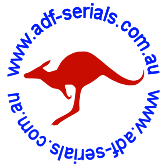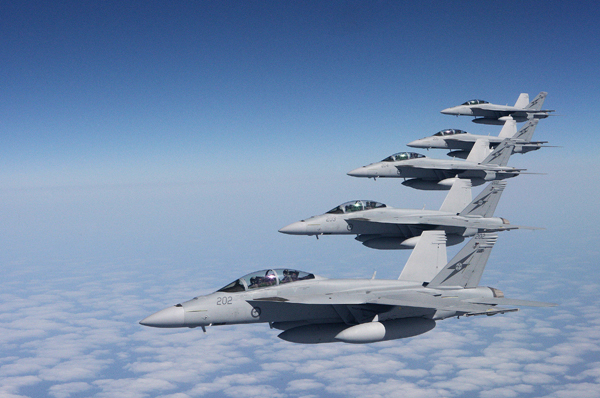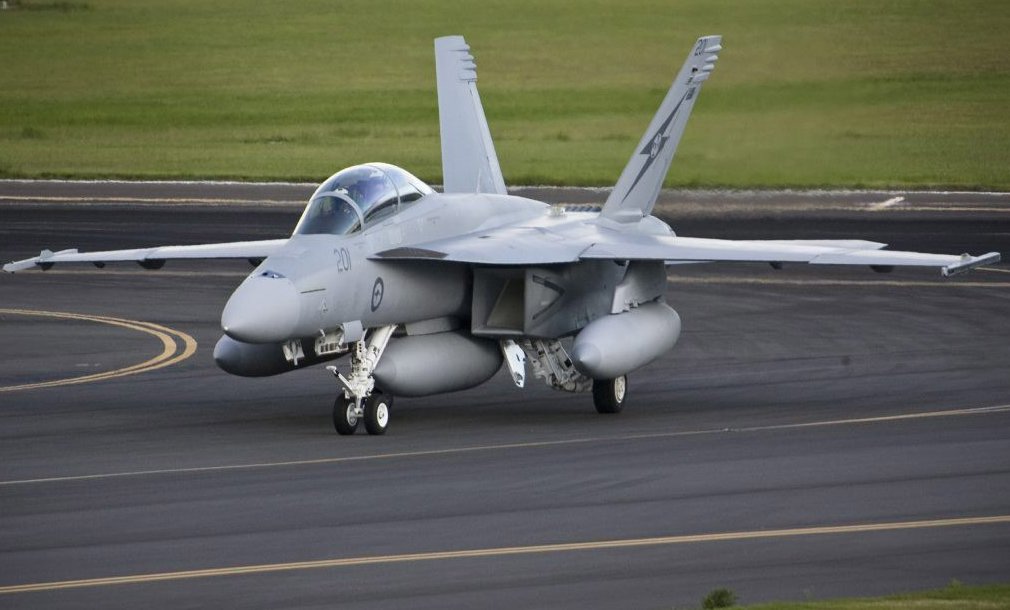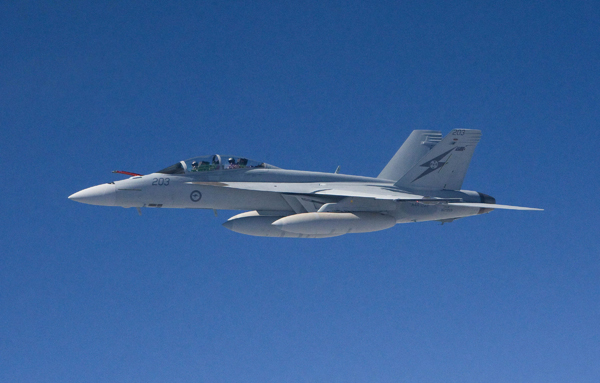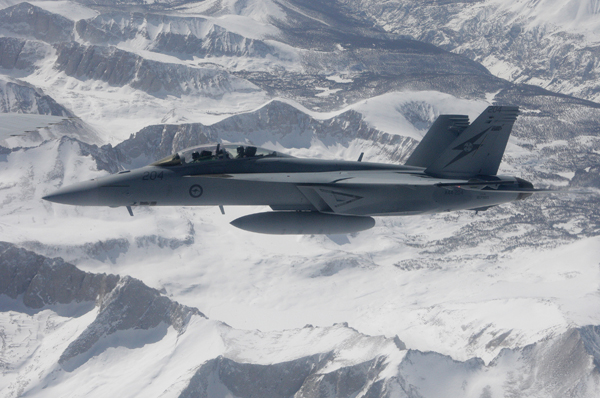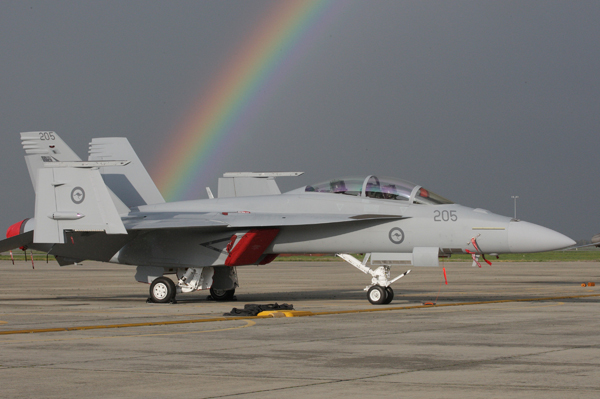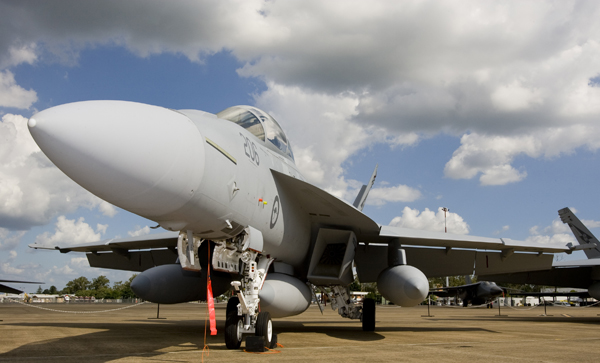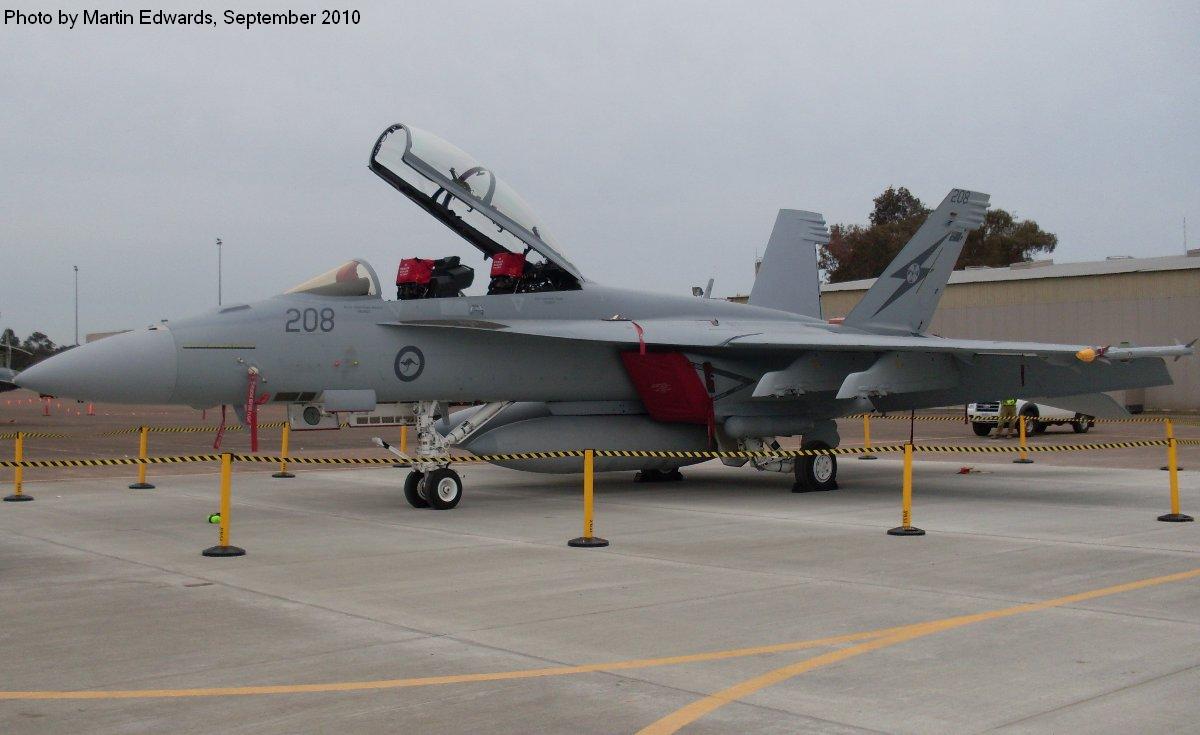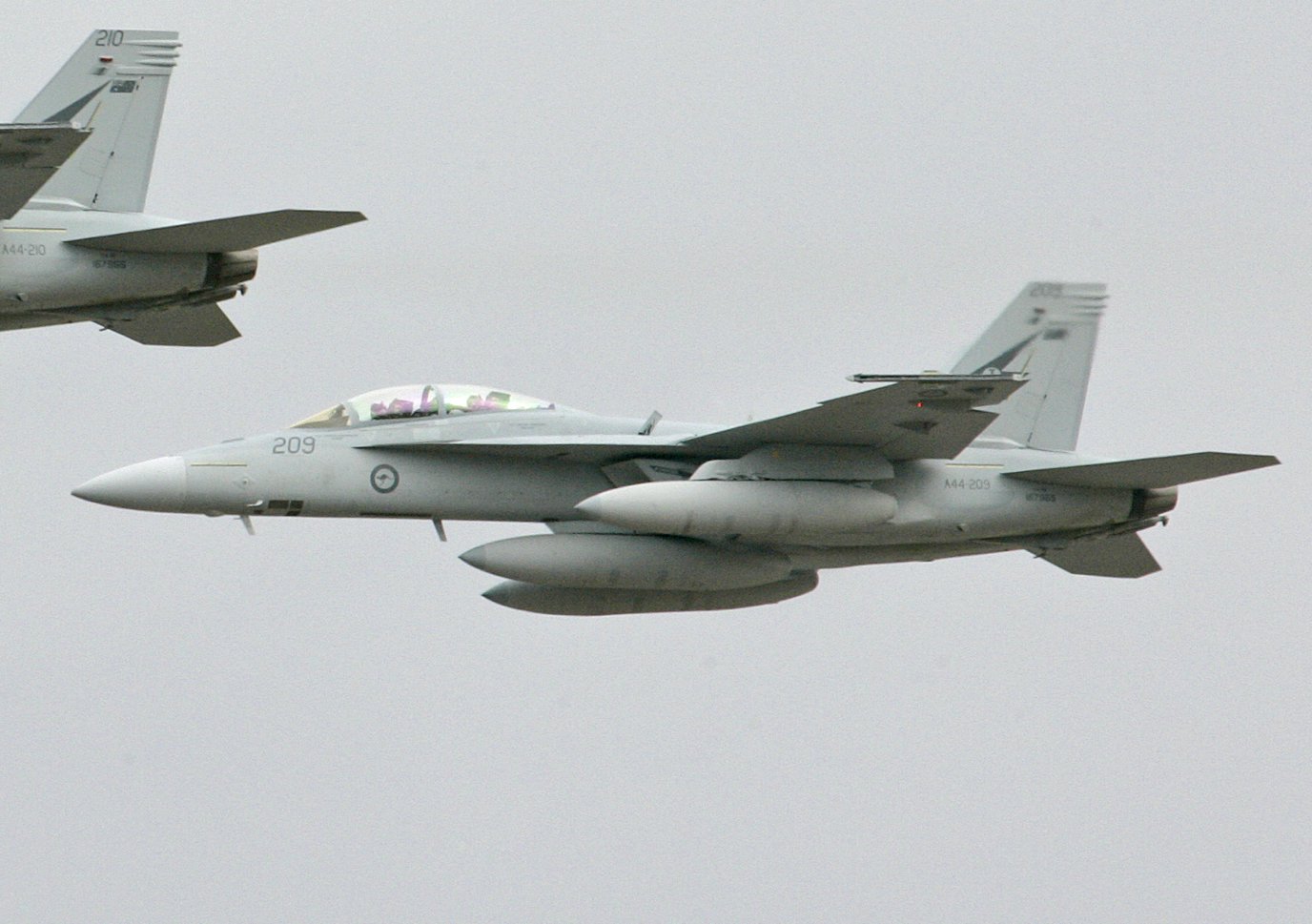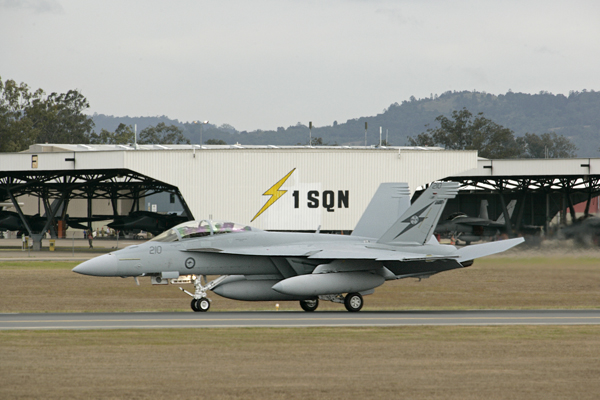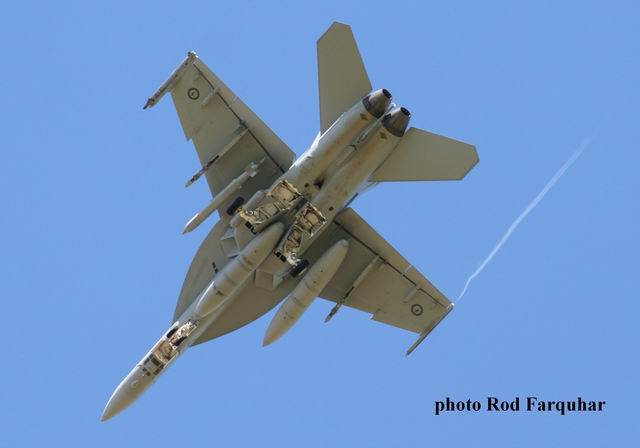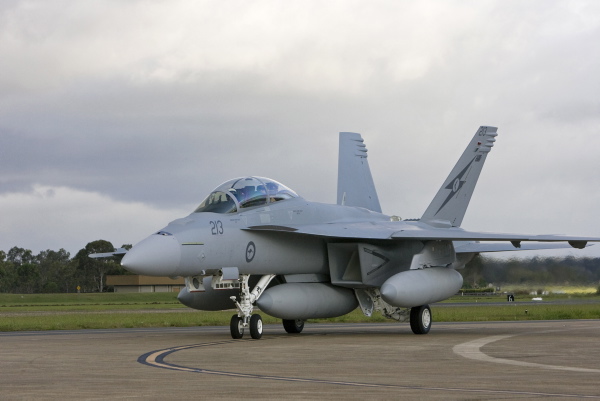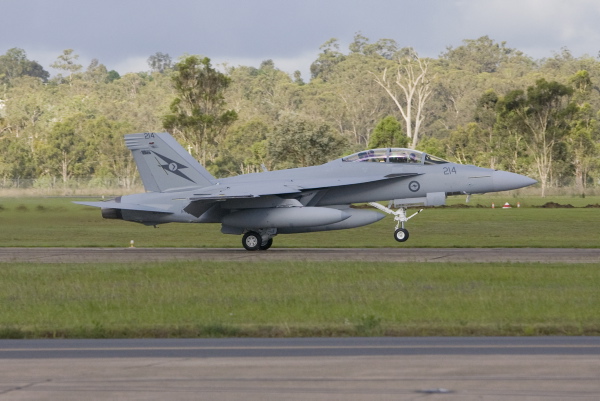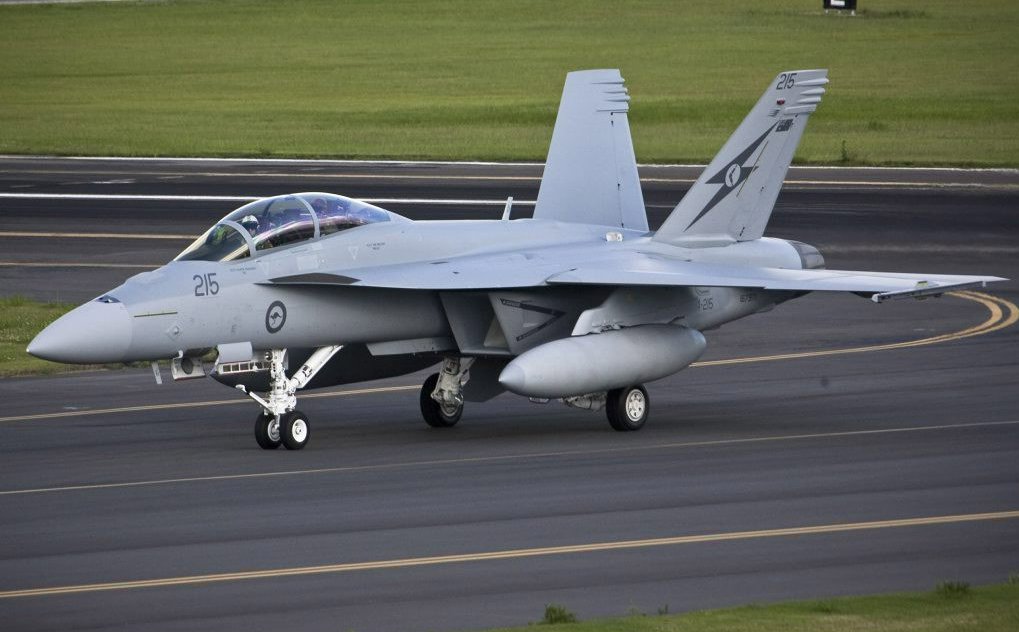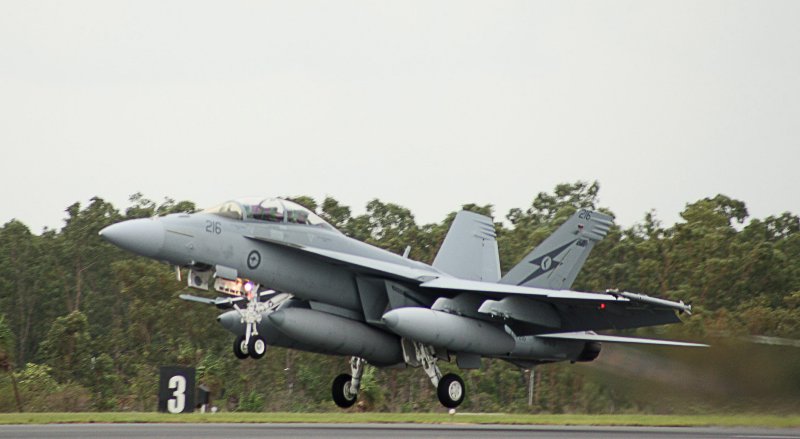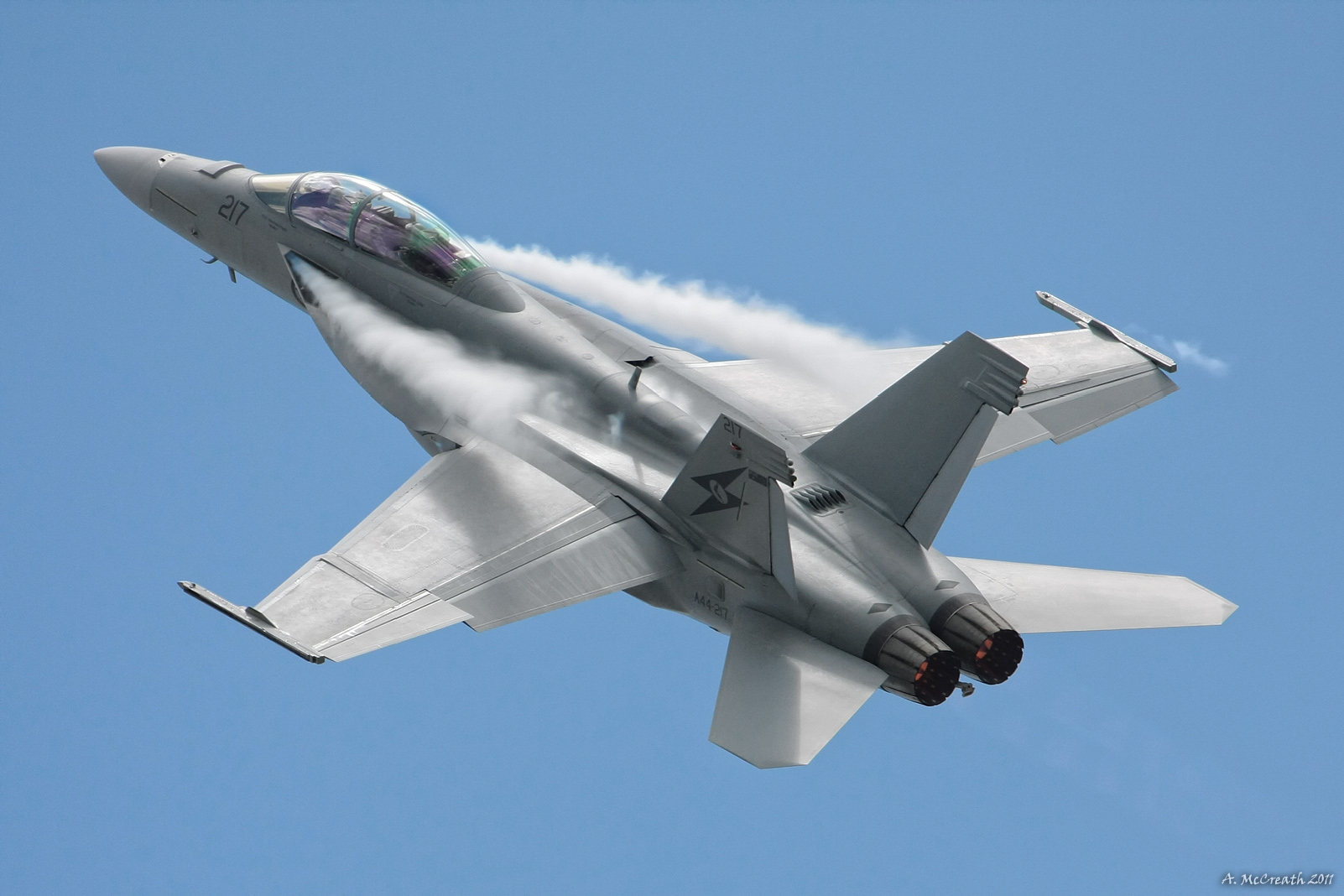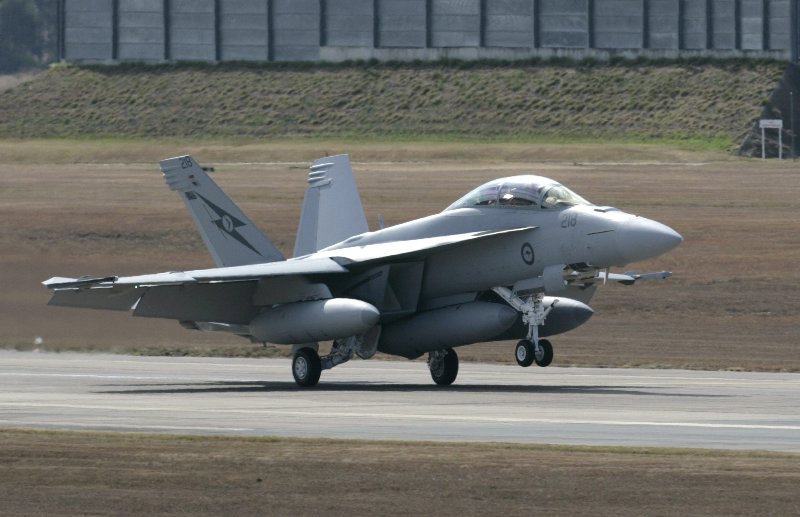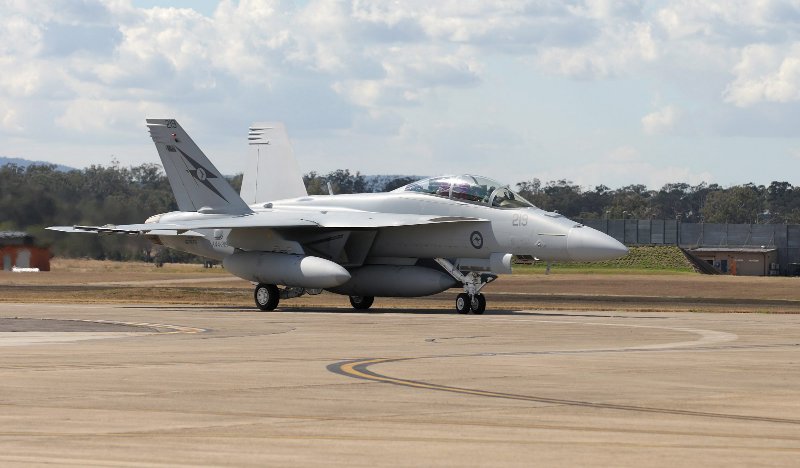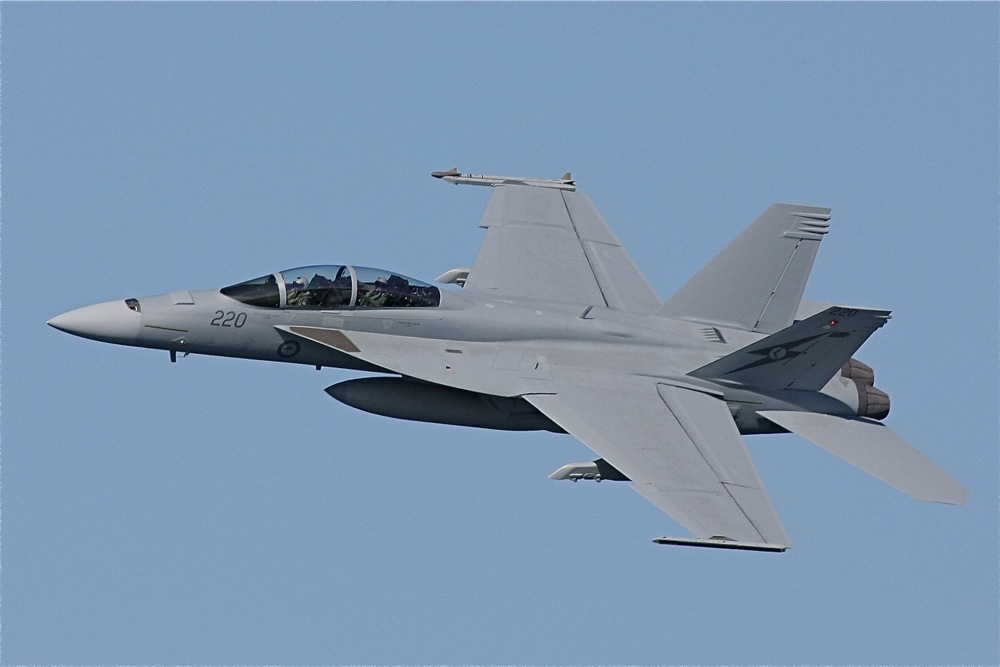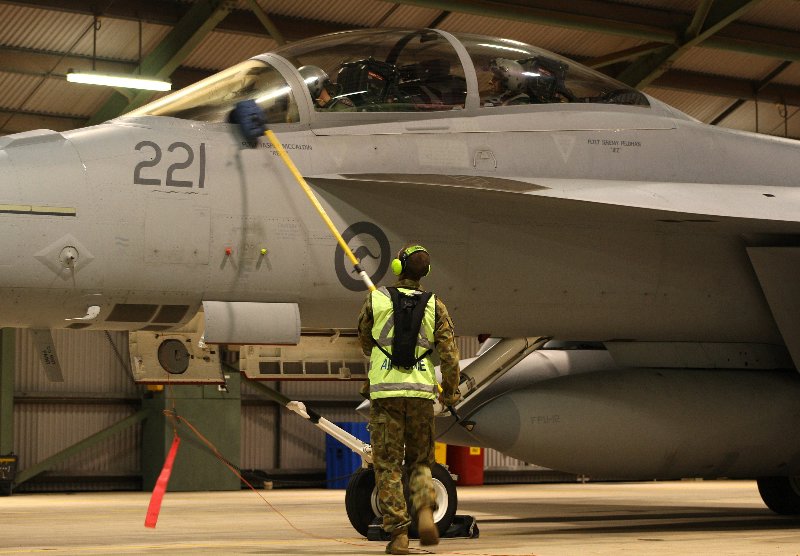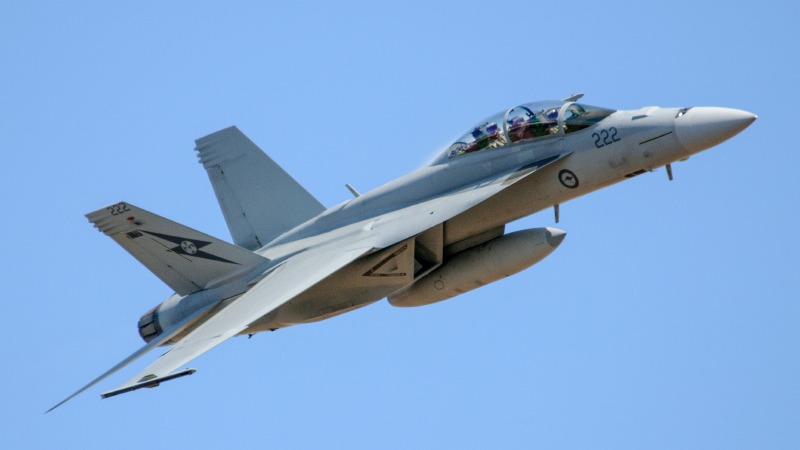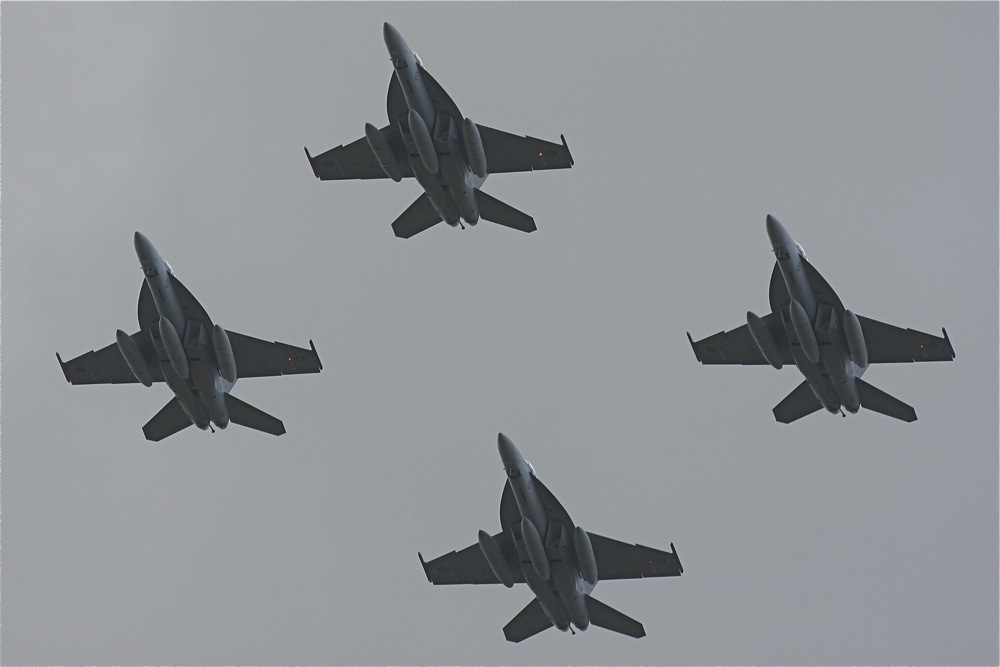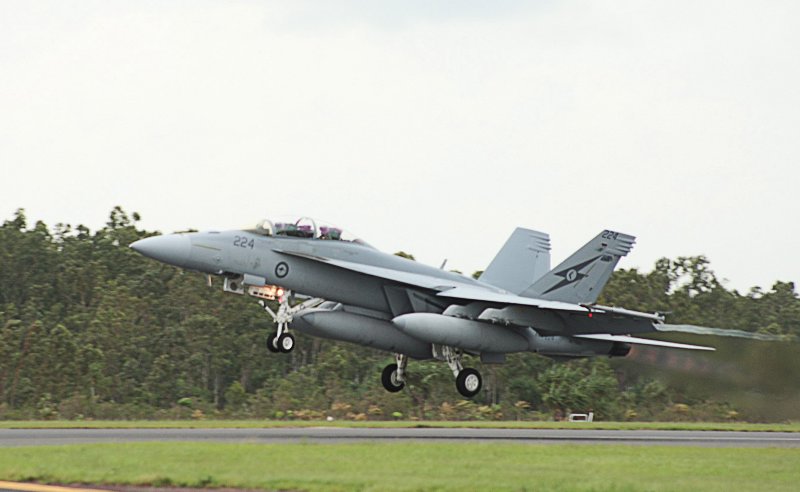|
ADF-SERIALS RAAF A44 Boeing F/A-18F Super Hornet |
|||||||||||||||||||||||||||||||||||||||||||||||||||||||||||||||||||||||||||||||||||||||||||||||||||||||||||||||||||||||||||||||
|
|
|||||||||||||||||||||||||||||||||||||||||||||||||||||||||||||||||||||||||||||||||||||||||||||||||||||||||||||||||||||||||||||||
|
On 3 May 2007, the Australian Government signed a contract to acquire 24 F/A-18Fs for the Royal Australian Air Force (RAAF), at a cost of A$2.9 billion, as an interim replacement for the F-111s of 1 and 6 Squadrons under Project Air 5349 Phase 1 (Bridging Air Combat Capability). The total cost with training and support over 10 years was announced as A$6 billion. A review of the purchase was announced on 31 December 2007, by the incoming Labor Government, as part of a wider review of the RAAF's combat aircraft procurement plans and on 17 March 2008, the Government announced that it would proceed as planned to acquire all 24 F/A-18Fs. The Block II package aircraft offered to the RAAF included installed engines and six spares, APG-79 AESA radars, Link 16 connectivity, LAU-127 guided missile launchers, AN/ALE-55 fiber optic towed decoys and other equipment. In 2008 the Australian Government requested export approval from the US government to purchase up to six EA-18Gs, which would be part of the order for 24 F/A-18F Super Hornets. On 27 February 2009, Defence Minister Joel Fitzgibbon announced that 12 of the 24 Super Hornets on order would be wired on the production line for future fit-out as EA-18Gs. The additional wiring would cost A$35 million and the 12 aircraft are informally designated ad F/A-18F+. A final decision on the conversion to EA-18Gs, at a cost of A$300 million, was planned at that stage to be announced in March 2012. Meanwhile, the first RAAF Super Hornet was completed in 2009 and first flew from Boeing's factory in St. Louis, Missouri on 21 July 2009. RAAF pilots and air combat officers began training in the USA in 2009, with No. 1 Squadron planned to become fully operational with the F/A-18F in 2010. The RAAF's first five Super Hornets arrived at RAAF Base Amberley on 26 March 2010. These initial aircraft were joined by six more aircraft on 7 July 2010. With the arrival of another four aircraft in December 2010, the first RAAF F/A-18F squadron was declared operational on 9 December 2010. On 23 August 2012, the Australian Government announced that 12 RAAF Super Hornets would be fitted with Growler capability at a cost of $1.5 billion; making the Royal Australian Air Force the only military other than the U.S. to operate the Growler's electronic jamming equipment. In December 2012, the Australian government sought information from the United States government about the cost of acquiring a further 24 F/A-18Fs. These aircraft were being considered as purchasing option to avoid a potential capability gap developing due to delays to the F-35 program. In February 2013, the U.S. Defense Security Cooperation Agency notified Congress of a possible Foreign Military Sale to Australia for up to 12 F/A-18E/F Super Hornet and 12 EA-18G Growler aircraft with associated equipment, parts, training and logistical support. In May 2013, Australia announced they would keep the 24 F/A-18F Super Hornets they currently have instead of converting them, and will order 12 new-built EA-18G Growlers. On 3 May 2013, the Australian Government announced that it will buy 12 new-build Growlers under Project Air 5349 Phase 3 - (Growler Airborne Electronic Attack Capability) for delivery by 2017 to supplement the existing Super Hornet fleet while remaining committed to the F-35 Lightning II acquisition. An upgrade to the RAAF Super Hornet fleet's weapons and countermeasures is also under consideration as Project Air 5349 Phase 2 (Bridging Air Combat Capability). The Growler fleet was allocated the A46 rather than the A44 prefix to designate these airframes as new build Growlers as distinct from the Growler pre-wired airframes in the F/A-18F Super Hornet fleet and the first EA-18G aircraft were rolled out in mid 2015. |
|||||||||||||||||||||||||||||||||||||||||||||||||||||||||||||||||||||||||||||||||||||||||||||||||||||||||||||||||||||||||||||||
|
|||||||||||||||||||||||||||||||||||||||||||||||||||||||||||||||||||||||||||||||||||||||||||||||||||||||||||||||||||||||||||||||
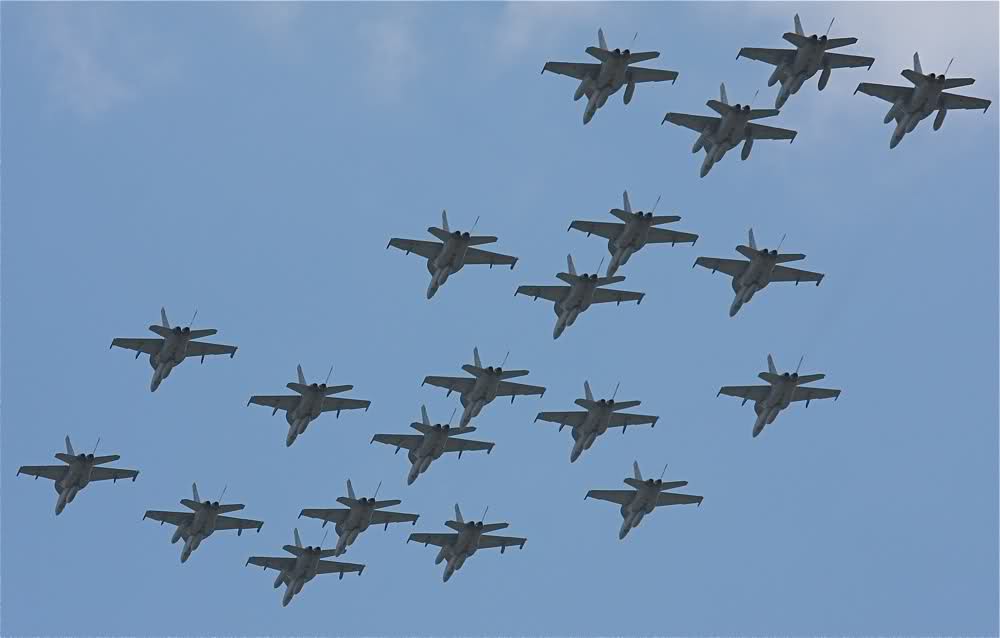 |
|||||||||||||||||||||||||||||||||||||||||||||||||||||||||||||||||||||||||||||||||||||||||||||||||||||||||||||||||||||||||||||||
|
The authors of this page are Darren Crick, Colin Turner and Brendan Cowan(Previously Martin Edwards) Source: Defence Media Centre, RAAF News, www.joebaugher.com , www.defence.gov.au , http://www.flightglobal.com/news/articles/australia39s-first-ea-18g-enters-production-400660/ , http://www.comint.org/ , Emails: Peter Bourke, Andrew McLaughlin, Nathan Rundle. Updated 25 January 2021 |
|||||||||||||||||||||||||||||||||||||||||||||||||||||||||||||||||||||||||||||||||||||||||||||||||||||||||||||||||||||||||||||||
|
|
|||||||||||||||||||||||||||||||||||||||||||||||||||||||||||||||||||||||||||||||||||||||||||||||||||||||||||||||||||||||||||||||
